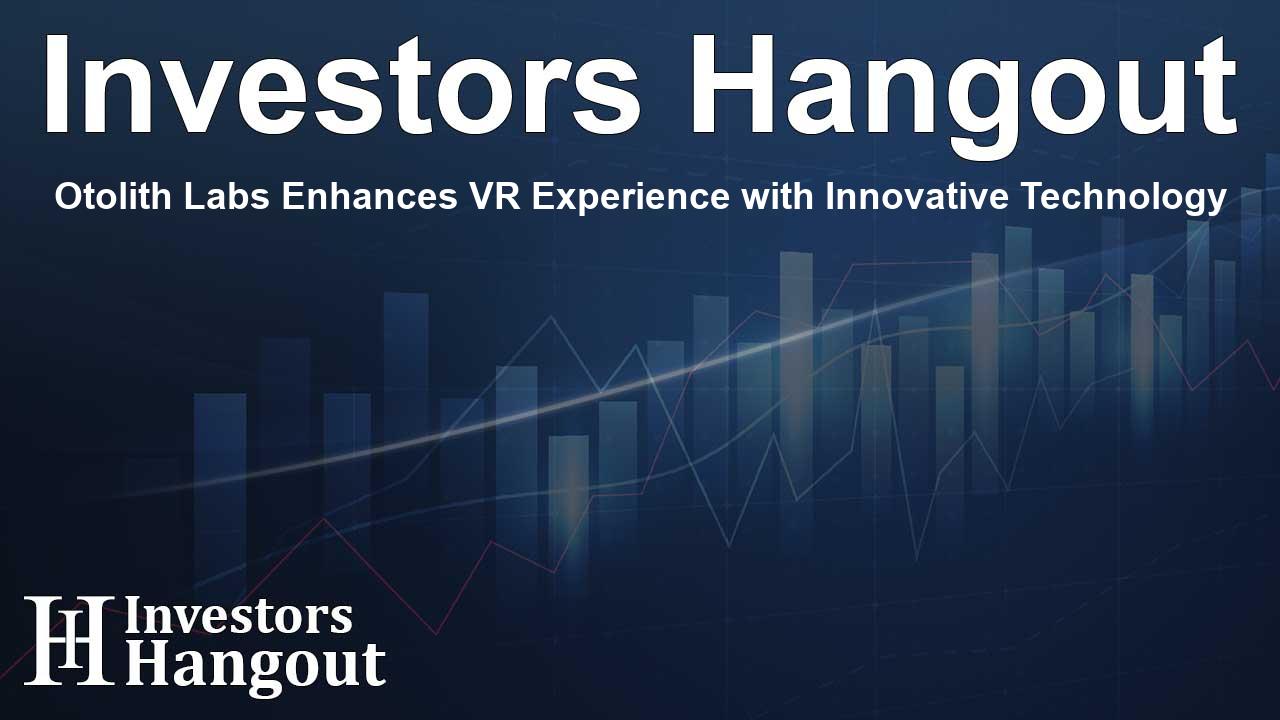Otolith Labs Enhances VR Experience with Innovative Technology

Innovative Approach to Cybersickness in Virtual Reality
Otolith Labs has emerged as a prominent player in the medical tech field, focusing on the treatment of vestibular disorders. Their recent exploratory study provided exciting insights into the effectiveness of their vestibular stimulation technology in combating cybersickness that often arises during virtual reality (VR) experiences.
Understanding the Impact of VR on Users
This exploratory study underscored how Otolith's technology enhances user experiences in VR by significantly reducing nausea and allowing for longer engagement durations. As many people enjoy gaming and immersive experiences, the occurrence of cybersickness has become a prevalent concern for users. Otolith Labs' innovative approach shows promise in addressing this issue.
Results Highlighting Technology Efficacy
The study's outcomes were compelling: Subjects who utilized the Otolith technology reported improved experiences in VR settings. Specifically, it demonstrated a marked decrease in nausea and an ability to tolerate longer periods in simulated environments without adverse effects.
Foundational Research into Vestibular Function
Didier Depireux, PhD, Co-Founder and Chief Science Officer at Otolith, emphasized the importance of this research as a foundation for understanding how visual stimuli can affect vestibular function, especially regarding motion sickness in VR. Unlike traditional vertigo, which might strike unexpectedly, VR-induced motion sickness provides a unique opportunity to study and offer potential treatments.
Exploratory Study Details
The exploratory user study was led by Shamus Smith and involved 30 healthy participants, aged between 19 and 37. Participants were balanced in terms of gender, providing a comprehensive view of the effects across demographics. Grouping participants allowed for comparative analysis of how varying stimulation levels impacted their experiences in VR.
Each participant underwent an assessment before being exposed to a VR roller-coaster ride while wearing an Oculus headset. During the simulation, feedback on nausea was collected to gauge the technology's effectiveness in real-time. The contrasting results between the control group and those using Otolith devices highlighted the significant benefits provided by the technology.
Implications for Vestibular Disorder Treatment
Many individuals struggle daily with vestibular disorders, facing limited treatment options. Otolith's advancements could prove vital in providing relief, facilitating improved quality of life, and helping users engage more fully with their daily activities.
The Future of Otolith Technology
Jon Akers, Otolith Co-Founder and Chief Technology Officer, expressed his excitement over the study findings, noting how they validate the potential of their technology. As Otolith continues to develop their wearable vestibular stimulation device, ongoing trials will assess its impact on chronic vestibular symptoms more broadly.
About Otolith Labs
Focused on revolutionizing treatments for vestibular disorders, Otolith Labs' patented technology is designed to mitigate symptoms associated with these conditions using precisely tuned vibrations. The FDA has recognized their efforts, granting Breakthrough Device Designation for their innovative approaches.
Frequently Asked Questions
What is Otolith Labs known for?
Otolith Labs specializes in developing medical devices aimed at treating vestibular disorders through groundbreaking technology.
What is cybersickness?
Cybersickness refers to the nausea and discomfort experienced by individuals during or after virtual reality experiences.
How does Otolith's technology work?
The technology utilizes tuned vibrations to engage with the sensors in the inner ear, aiming to alleviate symptoms of motion sickness.
What were the study's participant demographics?
The study involved 30 healthy individuals, with ages ranging from 19 to 37 years old, including a mix of male and female participants.
What are the potential applications of this research?
The findings can pave the way for new, effective treatments for vestibular disorders and enhance user experience in VR settings.
About The Author
Contact Kelly Martin privately here. Or send an email with ATTN: Kelly Martin as the subject to contact@investorshangout.com.
About Investors Hangout
Investors Hangout is a leading online stock forum for financial discussion and learning, offering a wide range of free tools and resources. It draws in traders of all levels, who exchange market knowledge, investigate trading tactics, and keep an eye on industry developments in real time. Featuring financial articles, stock message boards, quotes, charts, company profiles, and live news updates. Through cooperative learning and a wealth of informational resources, it helps users from novices creating their first portfolios to experts honing their techniques. Join Investors Hangout today: https://investorshangout.com/
The content of this article is based on factual, publicly available information and does not represent legal, financial, or investment advice. Investors Hangout does not offer financial advice, and the author is not a licensed financial advisor. Consult a qualified advisor before making any financial or investment decisions based on this article. This article should not be considered advice to purchase, sell, or hold any securities or other investments. If any of the material provided here is inaccurate, please contact us for corrections.
